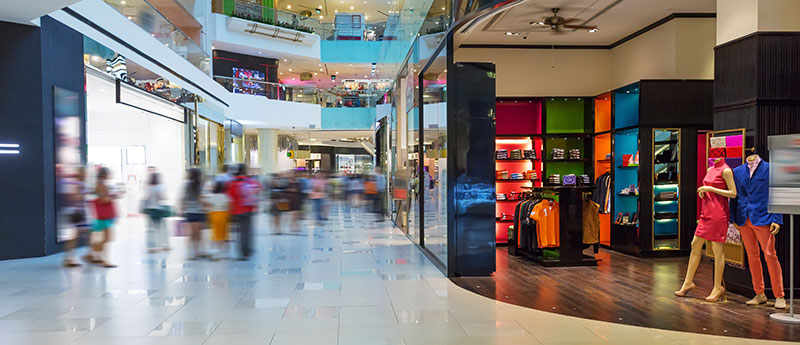On October 14th Wal-Mart’s stock had it’s worst day in 15 years, with company officials saying sales will be flat in fiscal year 2016 The news sent its stock down 10.04%, and sent ripple effects throughout the retail sector.
But what is really going on here?

According to Founders Fund partner Geoff Lewis, “…people in the technology industry have been predicting that brick-and-mortar-based businesses like Wal-Mart are going to end up really struggling, and I think that that's actually now coming to the fore in this powerful way today.”
Very eerie, considering Wal-Mart’s implosion happened almost a month after the panel I participated in, The Internet of Stores: The Anti-Amazon Model which took place during the Martiz Innovation Symposium Sept. 15-16 in Fenton, MO.
I was a panelist, along with Nathan Pettyjohn, CEO/founder of Aisle411; Matthew Kulig, Co-Founder of Aisle411; Barry Kirk, Vice President, Loyalty Solutions and David Woltz, Global Brand Leader Advisor.
The bottom line conclusion from our panel was that if retailers don't catch up with the times, the times are going to catch up with them. And we’re seeing that happen right now in spectacular fashion.
We discussed various developments in the bricks and mortar retail industry, what solutions retailers can adopt to become more relevant, and what’s coming down the pike in the future, including ecommerce integration and the internet of things.
I wanted to summarize the high points of the discussion in light of recent developments.
Retailers Have Some Obvious Advantages
There are advantages the big retailers have that Amazon doesn't have. One of these advantages is that as human beings, we are emotional creatures. We still want to be able to see and touch the stuff that we acquire. For example, we want to crank up the stereo to 11; we want to try on that cute outfit; we want to see our kids playing with the tricycle in the aisles.
But our world is becoming more and more digitized, and not everyone likes to go shopping. Not everyone wants to go to a store, deal with the traffic, deal with parking, get out, and then stand in the checkout line. I don’t relish spending 20 minutes in line just to buy three items because the store is full. That's archaic. I should be able to buy whatever I came in to buy and just walk out.
Stores Need to Customize The Shopping Experience
Retailers like Wal-Mart and Target have invested huge sums on big data to collect information on your online shopping habits, what you bought during previous shopping trips, and data from social media and financial institutions, to mention just a few sources.
Retailers should be using that data to customize the store experience for you. Instead of displaying items by category, they should (and some retailers are already doing this), display items together functionally.
For example, if you walk into a big box home improvement store, you might walk in to get a hammer. The store knows you're going to need nails, they know that you're going to need plaster in case the wall breaks, and that you're going to need protective gloves in case you’re not good at hammering.
If retailers know that beforehand, because they’ve been tracking and analyzing your data and recognizing the patterns, they can put it all in one place instead of in different aisles as they’ve traditionally done. That’s just convenience – it makes sense for the customer.
The Internet of Things and Big Data Are Double-Edged Swords
With the advent of smart devices, such as the refrigerator that knows you’re fresh out of beer, the washing machine that knows you’re out of detergent, and your cell phone that carries all your banking data and your online shopping history, there are mountains and petabytes of data retailers can use to make consumer’s lives easier.
But even though retailers can gather massive amounts of information, they must be very careful about how they use that information. They have to worry about the creepiness factor. The older generations are still paranoid about sharing too much information with retailers.
Millennials are ok with that. They’ve grown up in the sharing economy, and their lives are on display for everybody to see. But it’s going to take time for this clash of generations to settle and for retailers to be able to use this data as explicitly as they want to.
The Minority Report Will Come True – Just Differently
And talking about creepiness, while the Minority Report scenario, with ubiquitous retail electronic devices scanning your retinas to provide you with personalized offers via virtual reality holograms, is not likely to manifest itself in that way, we will still see a similar scenario. Just replace retina scanners with cell phone scans.
And the archaic – and I would say barbaric - shopping experience of having to stand in a long line on a crowded holiday shopping day will be replaced (thank goodness). Scanners will scan and tally up your whole basket and charge the credit card stored on your phone. If everything has been accounted for, you’ll get a green “go” light. If, however, you’re overdrawn on your account you’ll get a red “stop” light (which might be a little embarrassing).
Conclusion
Overall it was a great panel, not only because of the topics covered, but because of the timeliness of the topics – and how mission-critical it is for the retail industry to change. We agreed there must be a big shift in the retail marketing and retail pipeline, and my panelists and I agreed that it’s going to take a while for the industry to adapt.
But Wal-Mart’s big news might change all that. It just could be the catalyzing event the retail industry needs. As Geoff Lewis said on CNBC.com: "It always takes longer for these things to shift than people expect, but once they do shift, as Wal-Mart certainly has today, it happens very quickly."























